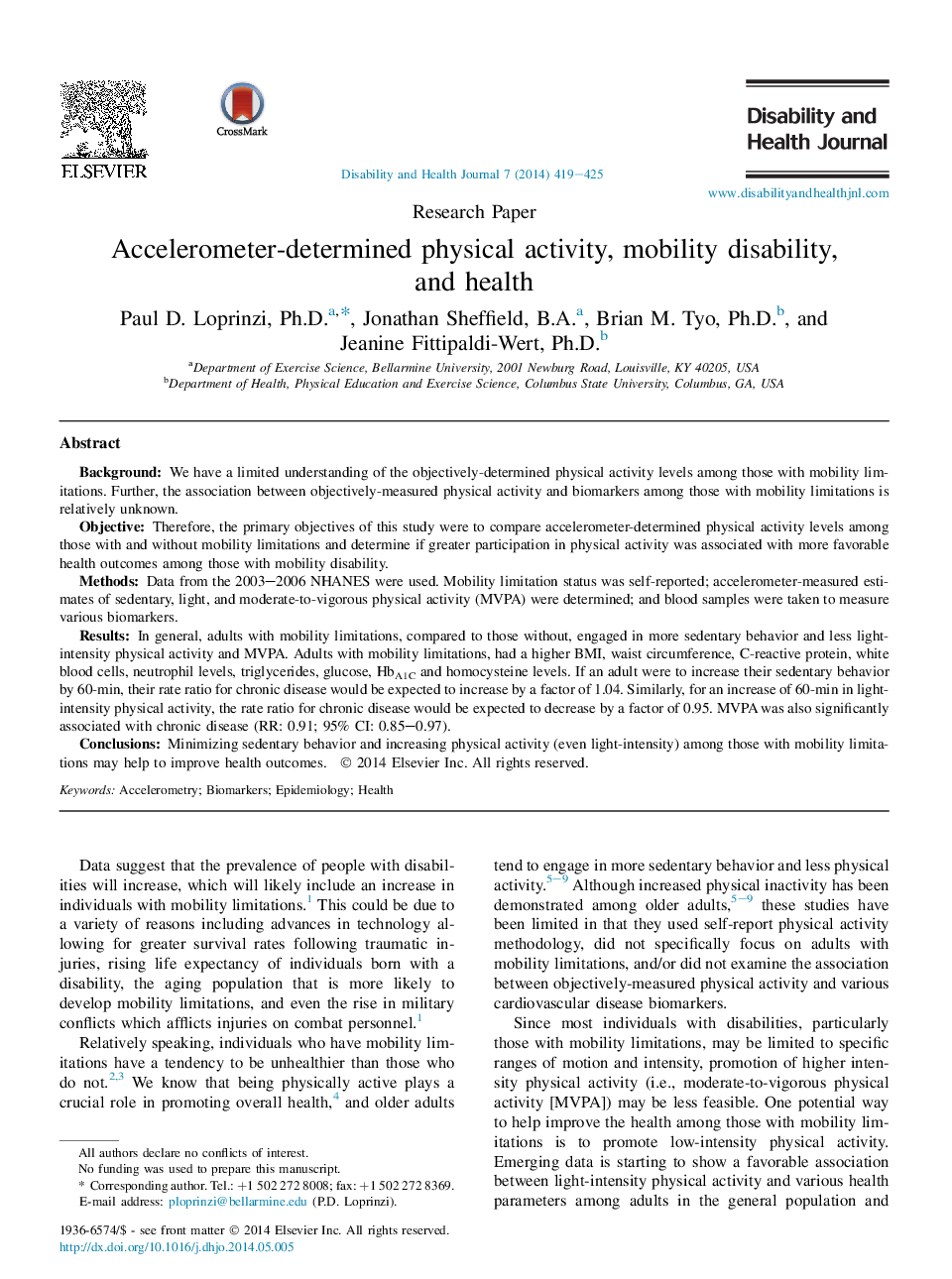| Article ID | Journal | Published Year | Pages | File Type |
|---|---|---|---|---|
| 4197207 | Disability and Health Journal | 2014 | 7 Pages |
BackgroundWe have a limited understanding of the objectively-determined physical activity levels among those with mobility limitations. Further, the association between objectively-measured physical activity and biomarkers among those with mobility limitations is relatively unknown.ObjectiveTherefore, the primary objectives of this study were to compare accelerometer-determined physical activity levels among those with and without mobility limitations and determine if greater participation in physical activity was associated with more favorable health outcomes among those with mobility disability.MethodsData from the 2003–2006 NHANES were used. Mobility limitation status was self-reported; accelerometer-measured estimates of sedentary, light, and moderate-to-vigorous physical activity (MVPA) were determined; and blood samples were taken to measure various biomarkers.ResultsIn general, adults with mobility limitations, compared to those without, engaged in more sedentary behavior and less light-intensity physical activity and MVPA. Adults with mobility limitations, had a higher BMI, waist circumference, C-reactive protein, white blood cells, neutrophil levels, triglycerides, glucose, HbA1C and homocysteine levels. If an adult were to increase their sedentary behavior by 60-min, their rate ratio for chronic disease would be expected to increase by a factor of 1.04. Similarly, for an increase of 60-min in light-intensity physical activity, the rate ratio for chronic disease would be expected to decrease by a factor of 0.95. MVPA was also significantly associated with chronic disease (RR: 0.91; 95% CI: 0.85–0.97).ConclusionsMinimizing sedentary behavior and increasing physical activity (even light-intensity) among those with mobility limitations may help to improve health outcomes.
